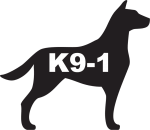Reinforcement is a cornerstone of effective dog training. By reinforcing desired behaviors, trainers can shape and solidify a dog's actions, ensuring obedience, reliability, and overall better behavior. Within the framework of reinforcement, it's crucial to differentiate between "duration" and "interval" to apply techniques correctly and achieve optimal outcomes. This article explores the distinctions between these two terms, how they apply to dog training, and practical examples to illustrate their usage.
Durational Reinforcement
Definition: Duration refers to the length of time a dog is required to maintain a particular behavior before receiving reinforcement. This type of reinforcement emphasizes the sustainability of a behavior over a period.
Application in Dog Training:
- Stationary Commands: Commands like "stay," "sit," "down," or "place" often utilize durational reinforcement. The aim is to increase the amount of time the dog remains in the commanded position before receiving a reward.
- Duration Increase: Gradually extending the time required for the behavior helps ensure the dog can maintain it consistently over more extended periods.
Example:
- Teaching "Stay":
- Initial Stage: The dog is asked to "stay" for just a few seconds and is immediately rewarded.
- Intermediate Stage: The duration is gradually increased to 30 seconds, one minute, five minutes, and so on, with the dog being rewarded for maintaining the position.
- Advanced Stage: The dog can stay for prolonged periods, even with distractions, knowing that the reward comes after the duration set by the trainer.
Interval Reinforcement
Definition: Interval refers to the schedule based on time intervals during which reinforcement is given for a specific behavior. Interval reinforcement focuses on the timing between rewards rather than the duration of the performed behavior.
Application in Dog Training:
- Consistency of Behavior: Interval reinforcement ensures that the dog exhibits consistent behavior over time, rather than just responding to immediate cues.
- Time-Based Rewarding: The dog receives reinforcement based on fixed or variable time intervals, encouraging sustained behavior.
Types of Interval Schedules:
- Fixed Interval (FI): Reinforcement is provided after a specific, consistent amount of time has passed.
- Example: If training the dog to remain calm while at home, you might reward every five minutes of calm behavior (FI-5).
- Variable Interval (VI): Reinforcement is given after varying time intervals, creating an unpredictable pattern.
- Example: Rewarding the dog for calm behavior at irregular intervals averaging five minutes (VI-5).
Comparison: Duration vs. Interval
Goal:
- Duration: Focus is on the length of time the dog maintains a specific behavior before receiving a reward.
- Interval: Focus is on the timing between the reinforcements, independent of the behavior duration.
Behavior Emphasis:
- Duration: Shapes sustained performance of a particular action. Useful for stationary commands and prolonged tasks.
- Interval: Encourages ongoing, consistent behavior over time. Useful for maintaining overall behavior patterns.
Example Applications:
- Training 'Stay' (Duration):
- The dog must maintain a "stay" position for increasing amounts of time.
- Trainer rewards the dog only after the predetermined duration is successfully completed.
- Training Quietness (Interval):
- The dog is rewarded for remaining quiet at intervals, whether fixed or variable.
- This encourages the dog to maintain quiet behavior knowing that reinforcement comes over time, not necessarily tied to the immediate action.
Practical Implementation
Using Duration and Interval Together:
- Trainers often combine both approaches to fine-tune behavior. For example, while teaching 'down-stay,' a trainer might initially focus on duration to establish the behavior and then switch to interval reinforcement to maintain it over time with less frequent rewards.
- Example:
- Phase 1: Duration Focus - Ensure the dog can stay down for extended periods (e.g., starting with 10 seconds, gradually moving to 5 minutes).
- Phase 2: Interval Focus - Once the dog can stay down, start rewarding every specific time gap, such as every 2 minutes, irrespective of the total duration the dog has been down.
Conclusion
Both duration and interval reinforcement are essential concepts in dog training, each serving distinct but complementary roles. Duration helps build and extend specific behaviors over time, while interval reinforcement ensures consistency and sustained behavior. Mastering both techniques enables trainers to create a well-rounded approach, cultivating obedient and well-behaved dogs capable of adhering to commands for extended periods and maintaining consistent behavior over time. Understanding and applying these principles effectively can significantly enhance the training process, leading to more reliable and confident canine companions.


Responses